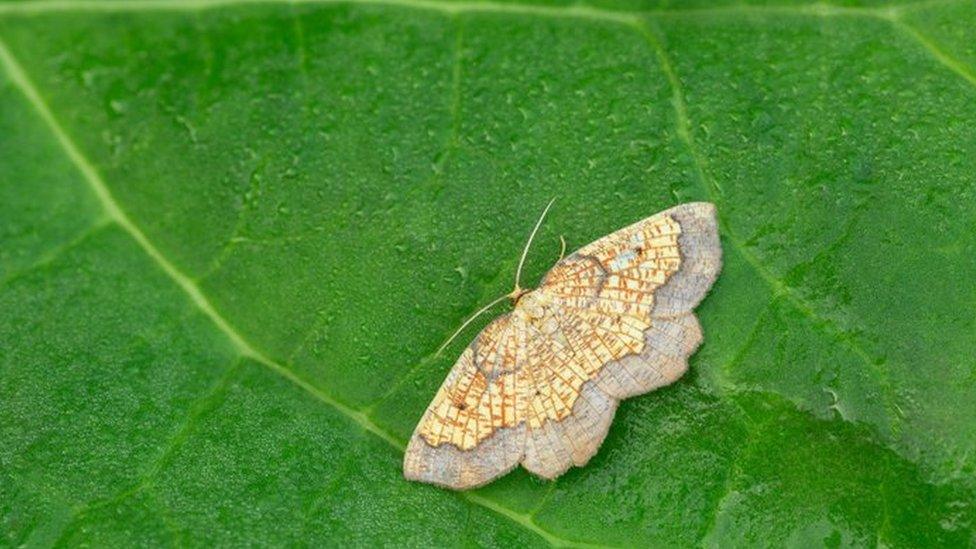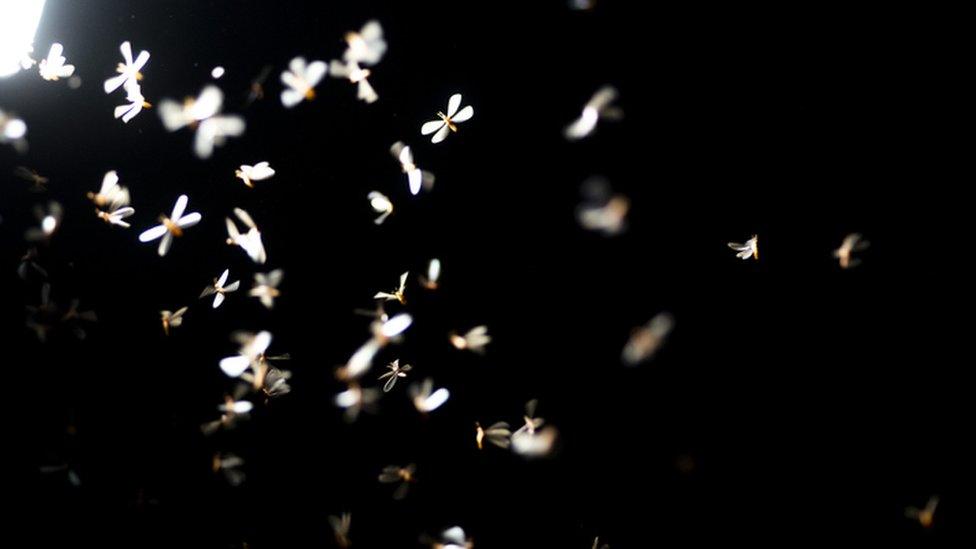Conservation: Endangered moth spotted in Scottish park
- Published
- comments

The dark bordered beauty moth is nearly extinct in England
A type of endangered moth has been seen flying in a Scottish park giving hope to conservationists.
Earlier this year, the caterpillars of the dark bordered beauty moth were released in the Cairngorms, in Scotland.
The dark bordered beauty moth feeds on a specific type of tree, called a suckering aspen.
The moths are nearly extinct in England and have only been found in three places in the UK in Aberdeenshire, Moray, and Yorkshire.
Why are they endangered?

The Royal Zoological Society of Scotland has a special facility in the Cairngorms to look after the moths
They like to live near tall trees, as well as open and damp grassland.
Because they like such specific areas of land, it's very difficult for them to grow and develop if their environment is at risk.
The Royal Zoological Society of Scotland said relatively little was known about the dark bordered beauty, but it was trying to learn more through research.
In March, researchers explained how moths in Britain were affected by climate change.
The moth starts off as an egg, which hatches into larva.
We usually call moth larvae caterpillars.
Next, they create a pupa, also known as a chrysalis.
Inside the chrysalis the caterpillar's body-parts break down and transform into an adult moth.
How to save a species

Because moths are drawn to light, experts use light traps to count how many moths are in a certain area
In 2022, 40 dark bordered beauty moth eggs were moved to a special breeding zone with the Royal Zoological Society of Scotland.
The eggs hatched caterpillars that turned into moths, which in turn produced more eggs. This meant another 160 caterpillars were released into the wild.
The Royal Zoological Society of Scotland use a technique called captive breeding, where the moths reproduce in a safe environment, watched over by scientists.
This means they get the right conditions to grow and develop, without having to face the threats of the outside world while they are most vulnerable.
